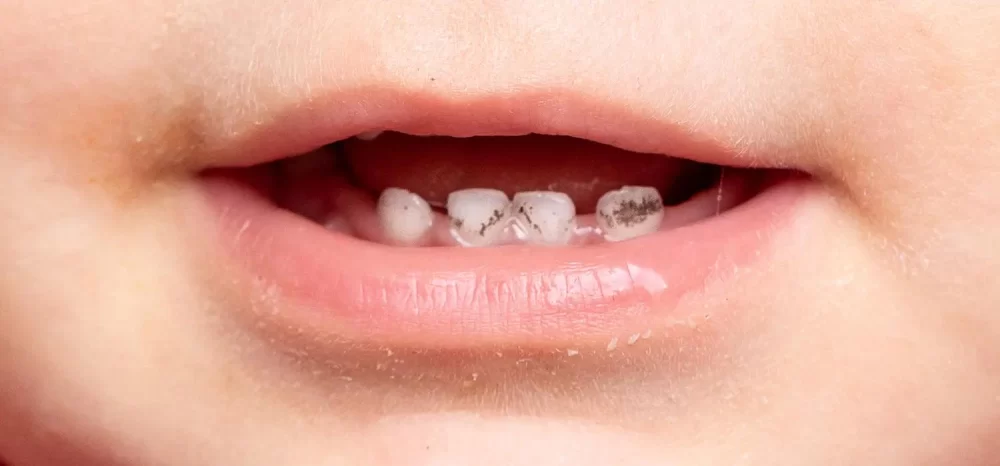
- Understanding Tooth Decay in Baby Teeth
- Methods to Treat Tooth Decay in Baby Teeth
- Importance of Early Intervention and Regular Dental Care
- Real-Life Stories About Treating Tooth Decay in Children
- How Dentistry Toothtruth Supports Parents in Caring for Baby Teeth
1. Understanding Tooth Decay in Baby Teeth
Tooth decay in baby teeth, also known as early childhood caries, is a common but often underestimated problem. Many parents believe that because baby teeth eventually fall out, cavities in these teeth are less important. However, untreated tooth decay can lead to pain, infection, difficulty eating, and problems with permanent teeth development.
Baby teeth play a crucial role in speech development, chewing, and maintaining space for adult teeth. Understanding how tooth decay develops in these primary teeth is essential to knowing how to treat it effectively. Tooth decay occurs when bacteria in the mouth produce acids after feeding on sugars, which gradually erode the tooth enamel and dentin layers.
1.1 Causes and Risk Factors
Several factors increase the risk of tooth decay in children’s teeth, including frequent consumption of sugary snacks or drinks, poor oral hygiene, prolonged bottle feeding especially at night, and lack of fluoride exposure. Identifying these risks early helps in planning effective treatment strategies.
1.2 Signs and Symptoms
Early decay may appear as white spots or lines on the teeth, progressing to brown or black discoloration as the cavity worsens. Children may experience tooth sensitivity, discomfort when chewing, or visible holes in their teeth. Prompt recognition of these signs is critical for timely care.
2. Methods to Treat Tooth Decay in Baby Teeth
Treating tooth decay in baby teeth requires a tailored approach depending on the severity of the decay and the child's overall health. The goal is to stop decay progression, relieve any pain or infection, and preserve the function of the tooth until natural exfoliation.
2.1 Preventive and Non-Invasive Treatments
In the very early stages, treatment may include fluoride varnishes or gels applied by a dentist to remineralize weakened enamel. Additionally, dental sealants can protect the grooves of baby molars from future decay by creating a physical barrier against bacteria and food particles.
2.2 Restorative Treatments
For more advanced decay, fillings are the most common solution. Pediatric dentists use tooth-colored composite resins that bond well and are safe for children. In cases where the decay has reached the nerve, a pulpotomy—a procedure similar to a root canal but limited to baby teeth—may be necessary to remove infected tissue and preserve the tooth.
2.3 Extraction as a Last Resort
If the tooth is severely damaged and cannot be saved, extraction may be necessary. However, maintaining space for the permanent tooth is critical, so a space maintainer device might be used to prevent shifting of adjacent teeth.
3. Importance of Early Intervention and Regular Dental Care
Early intervention not only stops tooth decay but also reduces the risk of complications like abscesses or spreading infection. Establishing a dental home by the child's first birthday helps monitor dental development and promotes preventive care habits.
3.1 Role of Parents in Prevention and Treatment
Parents are vital partners in managing their child's oral health. Teaching children proper brushing techniques, supervising daily dental care, and limiting sugary snacks all contribute to preventing new cavities and supporting treatment success.
3.2 Professional Dental Visits
Regular dental check-ups allow early detection of decay and provide opportunities for professional cleanings, fluoride treatments, and education. Pediatric dentists are specially trained to make children comfortable and tailor treatments to their unique needs.
4. Real-Life Stories About Treating Tooth Decay in Children
Take Emma’s case, a 3-year-old girl whose parents noticed her reluctance to eat and complaints of tooth pain. A visit to the dentist revealed multiple cavities in her baby teeth. With gentle restorative treatments and improved home care guided by her dentist, Emma’s condition improved significantly. Her parents shared how their initial anxiety about dental procedures disappeared thanks to a caring approach and the visible improvements in Emma’s comfort and smile.
Stories like Emma’s highlight the importance of not delaying dental visits and trusting professional advice on how to treat tooth decay in baby teeth effectively. They also remind parents that early treatment can prevent unnecessary discomfort and safeguard their child’s future oral health.
5. How Dentistry Toothtruth Supports Parents in Caring for Baby Teeth
At Dentistry Toothtruth, we recognize the challenges parents face when addressing tooth decay in young children. Our team offers expert pediatric dental care, combining gentle techniques with personalized education to empower families.
We provide a full range of services—from preventive care like fluoride treatments and sealants to advanced restorative options. Additionally, Dentistry Toothtruth recommends the best dental products and tools suitable for toddlers and infants, ensuring that parents have access to everything needed for effective daily oral care.
Choosing Dentistry Toothtruth means choosing a partner dedicated to preserving your child’s smile and overall health. We encourage you to reach out for professional advice and discover the ideal products and treatments to keep your baby’s teeth healthy and decay-free.







 Raytown Dental Care4.0 (587 review)
Raytown Dental Care4.0 (587 review) Lindsey Anderson Family Dentistry4.0 (85 review)
Lindsey Anderson Family Dentistry4.0 (85 review) Dr. Daniel T. Chung, DDS5.0 (24 review)
Dr. Daniel T. Chung, DDS5.0 (24 review) Julio C. Novello DDS5.0 (348 review)
Julio C. Novello DDS5.0 (348 review) Flanders Pediatric Dentistry4.0 (210 review)
Flanders Pediatric Dentistry4.0 (210 review) Heller Paul B DDS5.0 (2 review)
Heller Paul B DDS5.0 (2 review) The Importance of Oral Health Education During Pregnancy for a Healthy Pregnancy
The Importance of Oral Health Education During Pregnancy for a Healthy Pregnancy Best Tips for Brushing Your Teeth Properly for Healthy Gums: Essential Techniques for Oral Health
Best Tips for Brushing Your Teeth Properly for Healthy Gums: Essential Techniques for Oral Health Why Skipping Dental Checkups Can Lead to Bigger Oral Health Problems
Why Skipping Dental Checkups Can Lead to Bigger Oral Health Problems Advantages of Porcelain Dental Restorations
Advantages of Porcelain Dental Restorations How Can Diabetes Cause Tooth and Gum Problems? Preventing and Managing Oral Health Issues
How Can Diabetes Cause Tooth and Gum Problems? Preventing and Managing Oral Health Issues Healthy Habits for Promoting Good Oral Health and Hygiene: Tips for a Healthy Smile
Healthy Habits for Promoting Good Oral Health and Hygiene: Tips for a Healthy Smile